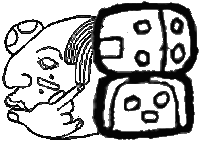The Direction of One's Course
In my humble opinion, the ego does not need to be eliminated.
Buddha’s Path is a way of living within the “context” of what is happening, it is not intended to be an escape from what is going on.
To live in the context of a human life does not require the elimination of the ego. However, what is actualized, when living the Buddha Way, is the “transformation” of the ego so that it is incorporated into one’s daily life in a balanced role.
In this balanced role, the ego is like a tool that the self uses to realize the currents and eddies of life as a reasonable whole. It has its appropriate and necessary place in functioning within the whole of the self that is living its human life.
Just as on a ship, it is the navigator that informs where the ship is and where it is going, but it is the captain that chooses the course. So it is that in living the Buddha Way, it is the ego that aids us in the process of living, but it must be balanced with the awareness of the “whole” true self. The ego is like the book that you are reading, but it is you that chooses which book to open.
An ego in balance, I have found, is silent in its work. When the self-view of one’s identity does not depend upon the ego (but instead “identifies” with that which it is aware of the true self), the ego is seen as the facilitator of the realization of the fabric of life that one is enmeshed in, rather than the leash around the neck that leads you from one sensory experience to another.







